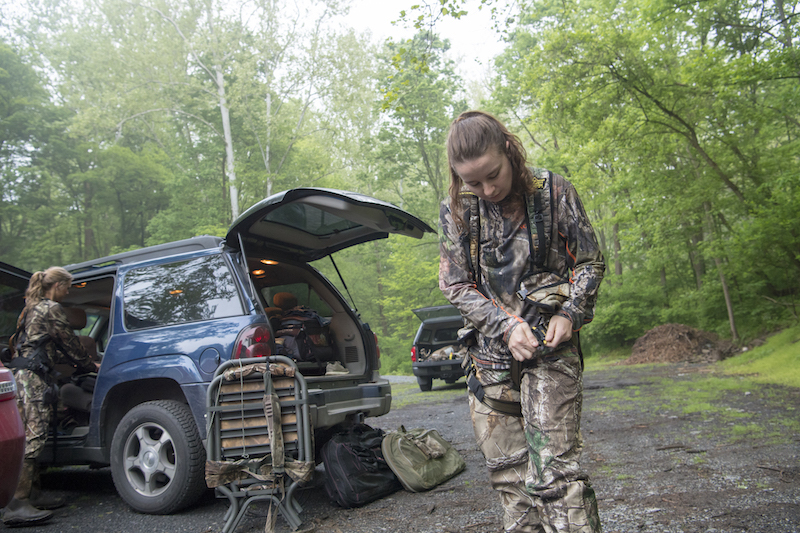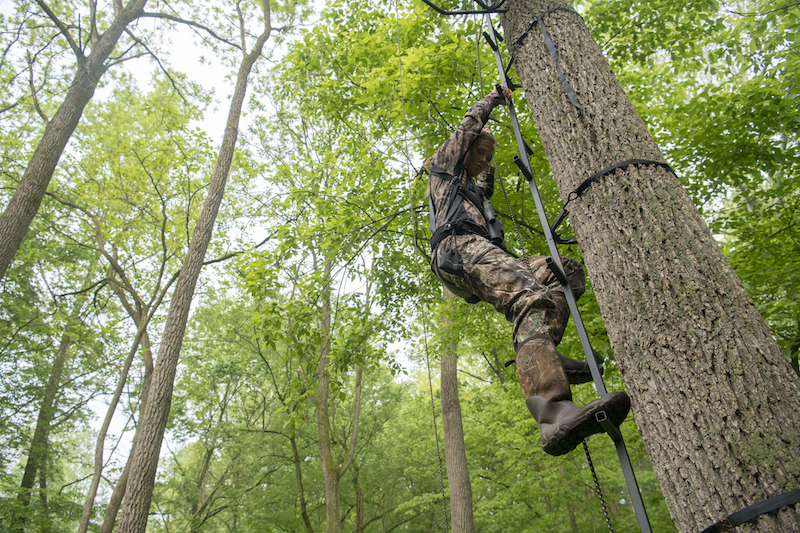Bowhunting is a safe sport. In fact, hunting is safer than golf, tennis, football, baseball and ping-pong, according to a National Safety Council report.
Hunting accidents do happen, but few involve accidental shootings. A 10-year study in Ohio found that most deer hunting accidents are treestand falls.

Be prepared with the knowledge of what to do if you do fall from your stand. Photo Credit: ATA
What should you do if you fall from your stand while wearing a safety harness or fall-arrest system, and you’re suspended from its lifeline or tether? Five steps could save your life.
Take a deep breath and gather yourself.
If you have a phone or GPS unit with a transmitter, call 911 for help immediately. Communicate your exact location and status to the operator. If you don’t have service or can’t contact 911, your next move is to send an SOS via satellite with your personal locator beacon. If you don’t own a PLB, yell and whistle for help, and hope a hunting buddy or someone else is within earshot. Whatever your option, try hard to contact someone immediately. It’s extremely important to summon help before you lose consciousness, which can happen faster than you might realize.
Once help is on the way, assess your situation and create a plan. Are you hurt? What’s between you and the ground? What resources do you have to rescue yourself? You should act quickly, but not rashly. Move to step 4a or 4b, depending on your situation.
If you’re physically able, climb back into your treestand. Wait for help before descending the tree.
Hanging motionless while suspended in your harness leaves you prone to suspension trauma, which is life-threatening. The study guide for Massachusetts’ hunter education course states that suspension trauma occurs when your harness’s leg straps constrict blood flow. The straps’ pressure can make blood pool in the legs and restrict circulation, which deprives organs of oxygen. If that happens you’ll lose consciousness and possibly die.
To avoid suspension trauma, secure your harness’ suspension-relief strap, and step into it to stand up. Standing relieves the strap’s pressure and improves blood flow. If you can’t stand, or you don’t have a suspension-relief strap, keep your legs moving by raising your knees or pumping your legs.
When help arrives, let them dictate a plan to get you down. Listen to their instructions and guidance. They’re trained for emergencies. Even if you don’t think you’re hurt, get evaluated to ensure you don’t have a concussion, internal bleeding or other injuries.
Most harnesses are rated for one fall. Check its instructions for usage information. If you lost or discarded your instructions, call the manufacturer or check its website for more information. Rule of thumb: Replace your harness if it has any frays or broken seams. If you’re unsure, buy a replacement.

Try to prevent an accident by insuring that your harness is hooked in correctly and is sized appropriately to your body. Photo credit: ATA
Harness
Treestand
Other
Visit an archery shop to buy a full-body harness and other essential bowhunting gear.